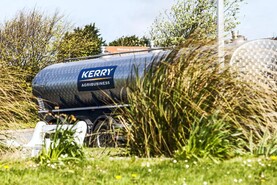Animal feed businesses are responsible for ensuring that feed placed on the market is safe, the Department of Agriculture has said, after packaging and muscle fibres were found in imported animal feed.
The packaging and fibres were found in a consignment of surplus food imported into Ireland, which was destined for animal feed.
“At all times, it remains the responsibility of the feed business operator to ensure that feed placed on the market is safe,” a Department spokesperson told the Irish Farmers Journal.
The Department sampled and tested this animal feed and asked the farmer to cease feeding the product and supervised its disposal.
“Following this case, the Department sought to remind feed business operators of their responsibilities through the two trader notices that subsequently issued,” they said.
Notices
The first notice concerned the import of surplus food destined for animal feed from third countries.
“If the surplus food being imported from a third country contains any level of animal by-products (for example milk/dairy or eggs or both of these), then it must be accompanied by a veterinary health certificate as set out in Reg (EU) No 142/2011.”
The second notice reminded feed business operators that “packaging is prohibited in animal feed and that there is no tolerance set in EU legislation for packaging material”.
Surplus food use 'extremely' common
The Department told the Irish Farmers Journal that: “The use of surplus food as an ingredient in feed is extremely common, particularly former bakery products. Out-of-tolerance results of samples do occur and all such incidences are followed up with the relevant parties.
“In this case, an analysis of the source of the feed, the method of transportation and other factors were all examined in co-operation with UK colleagues. Much of the ingredients used in feed in Ireland is imported.”
The prohibited material was found as part of the Department’s annual feed controls system to ensure feed placed on the market complies with EU feed legislation.
To read more on this story, click here.






 This is a subscriber-only article
This is a subscriber-only article










SHARING OPTIONS: